Atomic Habits—Summary, Notes, + Quotes
Who you’ll become in your future can be answered by your behavior today.
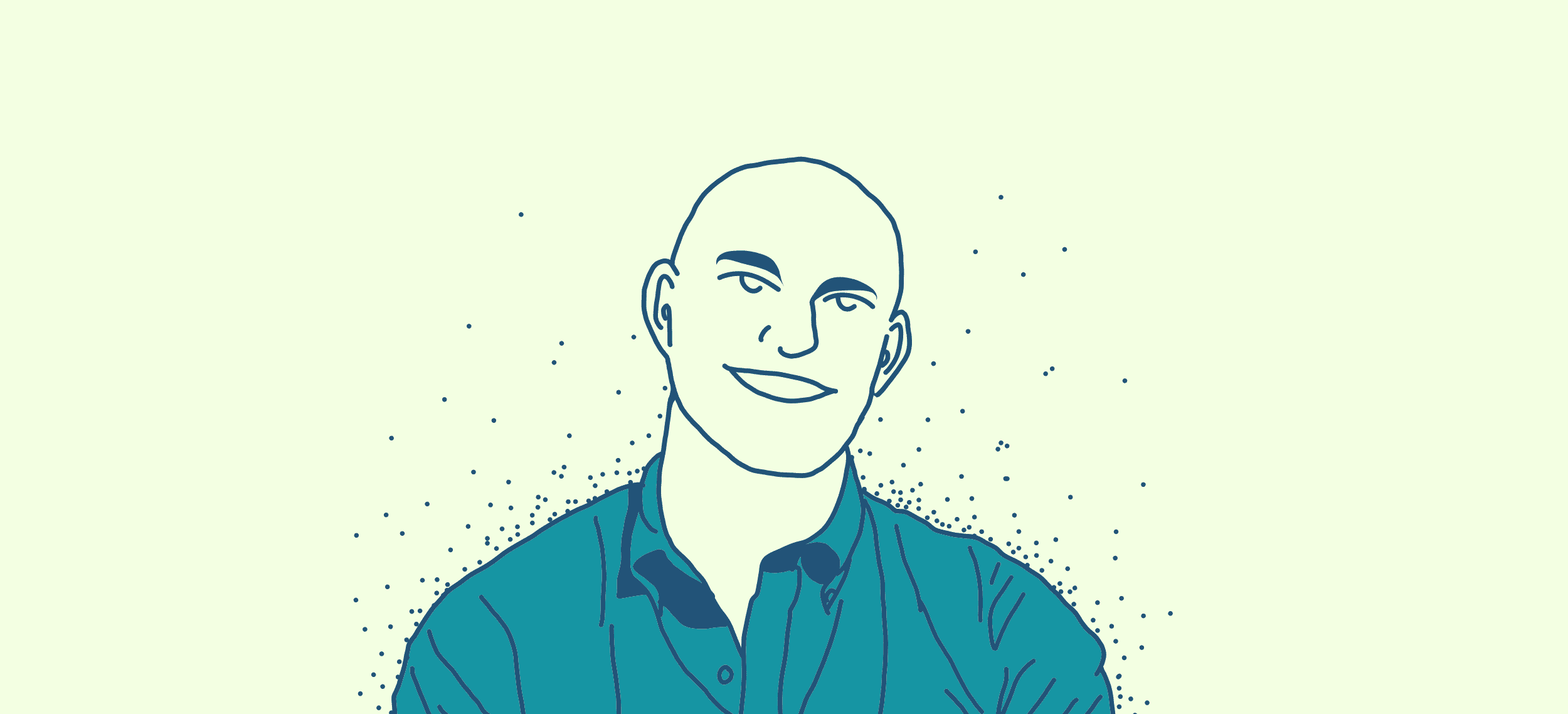
Out of all the books I’ve read in my life so far, the first book I’d have to recommend to anyone is Atomic Habits by James Clear.
Why?
Habits have an exponential effect on your life over time and the sooner you start good habits and stop bad ones, the better your life will be in the short and long term.
It will teach you how to actually start good habits, how to stop bad ones, and show you why paying attention to what you’re doing on a day-by-day basis really matters. Your day-to-day behavior is the single most important factor in determining the type of person you will be when you grow up.
This is a summary of Atomic Habits and important lessons you can learn from it. However, because this is a just a summary, a lot of info and supporting examples you need to read to fully understand the concepts, which will help you actually implement them are not included.
For this reason, don’t let yourself think this summary is all you need. Buy the book, read it completely and take your own notes, and use this summary as a reference.

Atomic Habits Summary — Why Habits Are Important
Habits are the small reoccurring things you do everyday or weekly (or sometimes monthly). Habits can be good, bad, or neutral.
“Habits are the compound interest of self-development. The same way that money multiplies through compound interest, the effects of your habits multiply as you repeat them. They seem to make little difference on any given day and yet the impact they deliver over the months and years can be enormous. It is only when looking back, two, five, or perhaps ten years later that the value of good habits and the cost of bad ones become strikingly apparent.”
James Clear
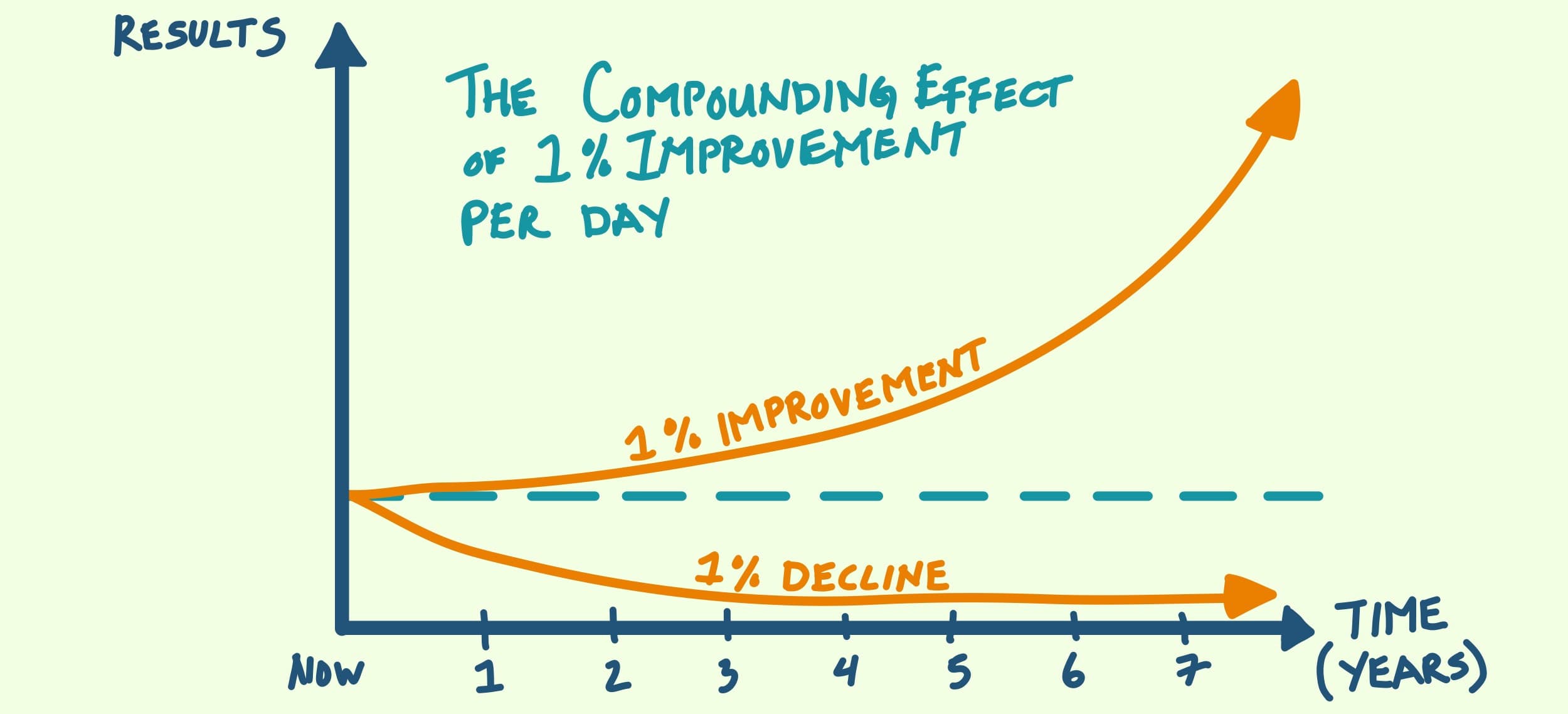
Think of your habits now. You probably have a few bad ones. These are just as important to take note of and work on changing because they compound into toxic results. One day you want to realize that you didn’t quite become the person you wanted to be and it may be too late to significantly change.
Good habits are hard to start and bad habits are hard to break for many reasons as described throughout Atomic Habits, but one important understanding is the results of small but frequent changes take time before you can clearly notice them.
“Your outcomes are a lagging measure of your habits. Your net worth is a lagging measure of your financial habits. Your weight is a lagging measure of your eating habits. Your knowledge is a lagging measure of your learning habits.”
James Clear
While forcing yourself to do and to stop certain things in your day may seem like it’s making your life too boring and routine, it will bring you peace and relieve your anxiety by knowing you’re doing the right things. It will allow you to enjoy your free time more.
“Habits do not restrict freedom. They create it. In fact, the people who don’t have their habits handled are often the ones with the least amount of freedom.”
James Clear
For example, if you don’t have good financial habits, you may find yourself always worrying about money and feeling like you never have enough to do what you want.
And by the way, if you do struggle with financial habits then you need to read this book:
Your Habits Define Who You Are
“Ultimately, your habits matter because they help you become the type of person you wish to be. They are the channel through which you develop your deepest beliefs about yourself. The process of building habits is actually the process of becoming yourself.”
James Clear
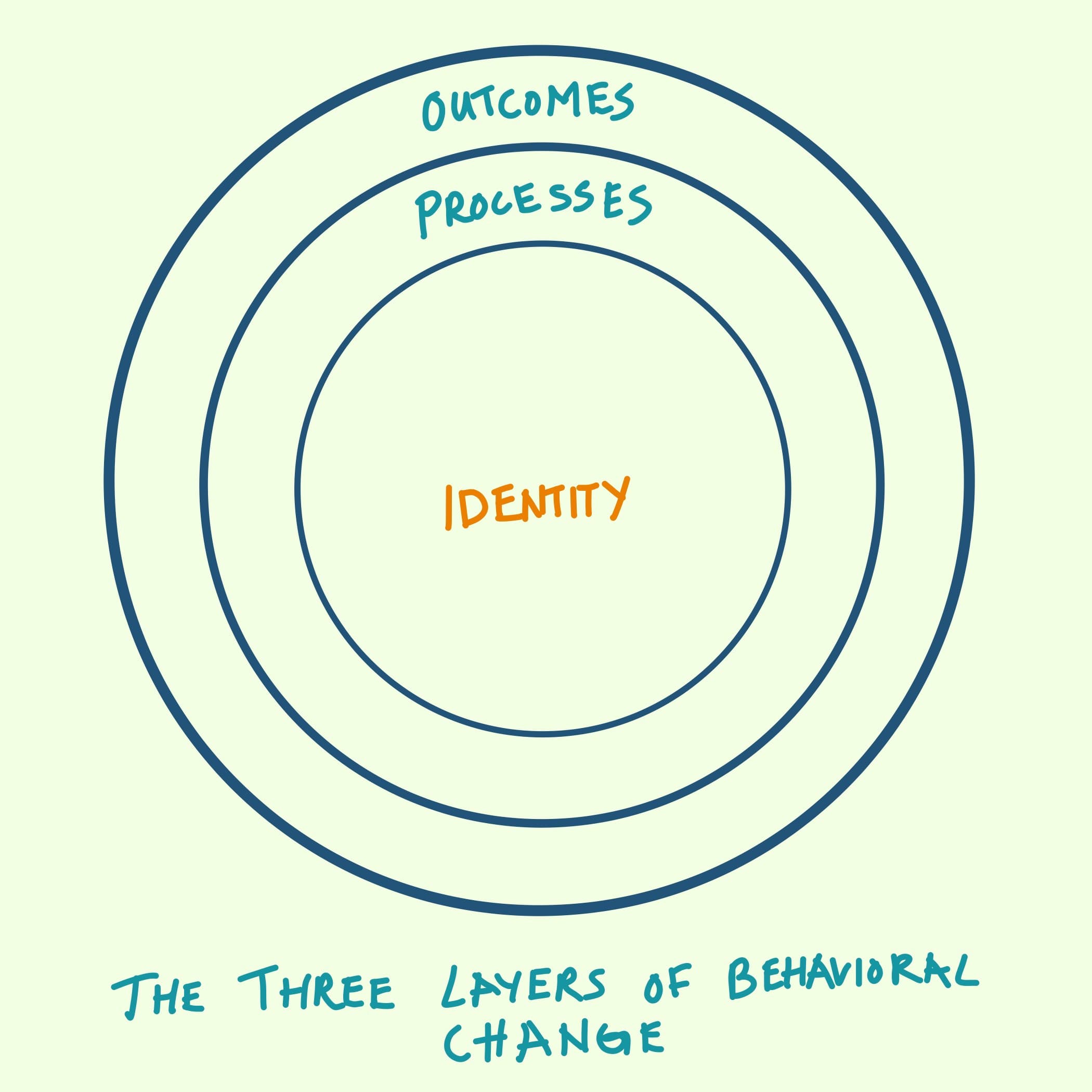
There are three layers of behavior change: Outcomes is the outer layer, Processes are the inner layer, and Identity is at the core.
Most goals people set are related to an outcome (e.g. make $100k salary by age 30). Most habits people set are related to a process (e.g. spend an hour each morning learning a new skill).
But if you start with your identity, the core of behavior change, it will reflect on your your habits and your outcomes much more effectively.
“The ultimate form of intrinsic motivation is when a habit becomes part of your identity. You might start a habit because of motivation, but the only reason you’ll stick with one is that it becomes part of your identity. True behavior change is identity change.”
James Clear
The Habit Loop: How Habits Work
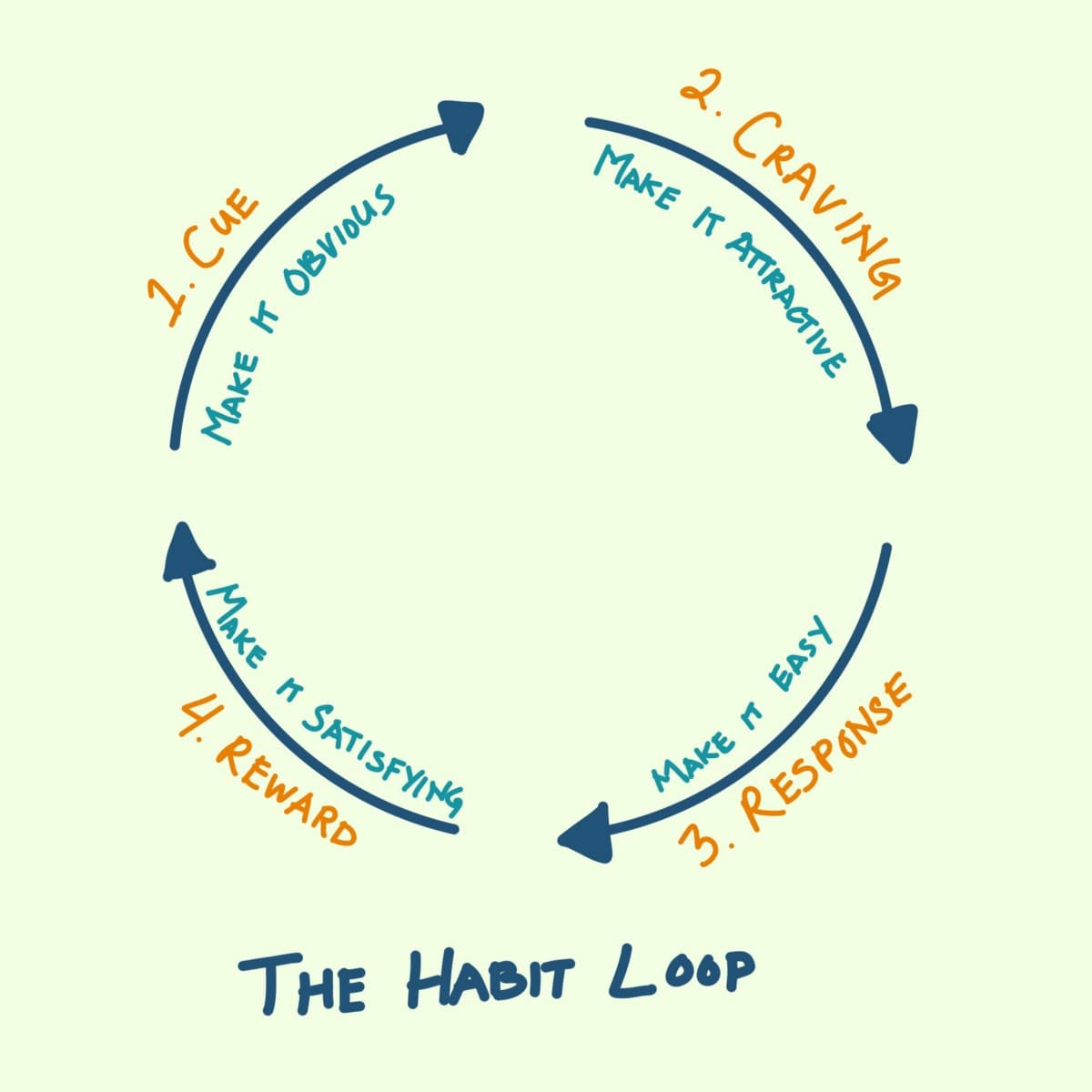
The process of building habits can be explained by the Four Laws of Behavior Change:
-
Cue — make it obvious
-
Craving — make it attractive
-
Response — make it easy
-
Reward — make it satisfying
The cue triggers the craving, which motivates a response, which provides a reward, which satisfied the craving, and ultimately becomes associated with the cue.
“Your brain is a reward detector. As you go about your life, your sensory nervous system is continuously monitoring which actions satisfy your desire and deliver pleasure. Feelings of pleasure and disappointment are part of the feedback mechanism that help your brain distinguish useful actions from useless ones. Rewards close the feedback loop and complete the habit cycle.”
James Clear
Below will be more details on each law. Keep in mind you can stack many of these laws together to help you start good habits and to stop bad ones.
I. Cue — Make it Obvious
Think about your current habits and what cues (the trigger) set them off. This can be really hard to uncover at first because your bad habits are probably already automatic and done unconsciously.
“Until you make the unconscious conscious, it will direct your life and you will call it fate.”
Carl Jung
There is a cue that acts as the cause for every action we do - you just have to find it. This is the reason why I don’t believe we have free will.
Cues trigger behavior and can come in many forms, but the most common are time and location. So if you want to start a new habit, you’re more likely to start it if you choose a specific time and place.
In addition to time and location, you can pair it with a current habit (e.g. right after you wake up, after you brush your teeth, after your evening shower, etc). I’ve personally found this method the most effective for me — essentially taking your existing morning/evening routine and adding to it.

Set up your environment for success
“Most people live in a world others have created for them, but you can alter the spaces where you live and work to increase your exposure to positive cues and reduce your exposure to negative ones.”
James Clear
This is called “environment design” and it provides an additional cue by setting up the space around you to make it easy and obvious to trigger a new habit.
Because it’s difficult to stop a bad habit in your normal environment, it’s easier to start a new habit in a new environment.
“When you step outside your normal environment, you leave your behavioral biases behind. You aren’t battling old environment cues, which allows new habits to form without interruption.”
James Clear
Create a separate space for work and relaxation. “One space, one use.”
Reversal: make bad habits invisible
If you can determine what your cues are for bad habits and remove them, you have a really good chance of stopping that bad habit all together.
“Self-control is only a short term strategy. You may be able to resist temptation once or twice, but it’s unlikely you can muster the willpower to override your desires every time. This practice is exhausting and your energy would be better spent optimizing your environment and removing cues for bad behavior.”
James Clear
II. Craving — Make it Attractive
If you have a bad shopping habit, this may be why: it’s literally the job of a marketer and advertiser to make their products attractive and make you crave it as much as possible.
“Compared to nature, these pleasure-packed experiences are hard to resist. We have the brains of our ancestors but temptations they never had to face.”
James Clear
Think of a bad habit you have right now. When you receive a cue for it, you anticipate the habit will be rewarding. It’s this anticipation that drives you to perform the habit. This anticipation comes from a spike in dopamine that predicts the habit will be rewarding.
So if you’re able to make a new habit you want to start attractive, you’ll be more likely to start it. You can do this by using a technique called “temptation bundling,” where you allow yourself to do something you like to do now (like check Reddit in the morning) only after you do a habit you want to start (meditate in the morning.) This can make meditation more attractive and something you look forward to because it means you to do something you want.

Eventually you may not need to use temptation bundling for good habits once you find the merit of the habit itself rewarding enough to make it attractive.
“Nothing sustains motivation better than belonging to the tribe.”
One way to sustain attractiveness for a habit you want to start is to surround yourself with people who have already made it a part of their life and their identity (or want to with you). It will turn “a personal quest into a shared one.”
For example, if you want to start going to the gym, surround yourself with people who are already do. You’ll be way more likely to start and keep the habit of going to the gym, when you see your friends do it like clockwork without a fuss.
“When you join a group, your identity becomes linked to those around you. Growth and change is no longer an individual pursuit. The shared identity begins to reinforce your personal identity. This is why remaining part of a group after achieving a goal is crucial to maintaining your habits. It’s friendship and community that embed a new identity and help behaviors last over the long run.”
James Clear
This obviously takes a lot of work and effort to execute, but the effect it has is enormous. So much so that the reverse is just as effective in the wrong direction.
It will be extremely difficult to go to the gym and eat better if the people you spend your most time with don’t subscribe to that lifestyle.
Why bad habits are hard to break
A craving for something is just a manifestation of a deeper underlying motive.
For example, your brain didn’t evolve with a craving to check Instagram. Rather at a deep level, your underlying motive may be to get social acceptance and approval. Your brain didn’t evolve to play video games, but rather to achieve status and prestige.
“Your habits are modern-day solutions to ancient desires. The underlying motives behind human behavior remains the same.”
James Clear
New apps, things, or video games don’t create a new motivation, they are just one solution of many available to meet that underlying motive.
“Your current habits are not necessarily the best way to solve the problem you face, they are just the methods you learned to use. Once you associate a solution with the problem you need to solve, you keep coming back to it — an explanation for why habits are hard to break.”
James Clear
Think again of your bad habits. Can you tell what your underlying motives might be? If you can, you may be able to find a new and positive habit that can meet the same motive and create the same positive feelings.
Reprogram your brain to enjoy hard habits
Changing your habits and routines are hard. You most likely have already tried to start new habits before and more than likely failed to keep at least one of them going.
One method Atomic Habits recommends to make habits less difficult to adopt is to reframe your thinking from “I have to go to the gym, to I get to go to the gym.” This simple shift in belief turns burdens into opportunities.
“Reframing your habits to highlight their benefits rather than their drawbacks is a fast and lightweight way to reprogram your mind to make a habit more attractive.”
James Clear
If you can associate going to the gym as an opportunity to get stronger and look better rather than exercise and hard work, you’ll be more likely to look forward to it and crave it.
This isn’t a trick — both mindsets are true and reflect reality. If you have to choose one or the other, why not the one that makes it attractive?
III. Response — Make it Easy
Environment design helps you create cues and can make performing your new habit easier — the 3rd law is all about making it easier to perform the habit you want as the correct response to a cue.
“If you want to master a habit, the key is to start with repetition, not perfection. You don’t need to map out every feature of the new habit. You just need to practice it. This is the first takeaway for the 3rd law: you just need to get your reps in.”
James Clear
Going back to the gym example, just start getting in the habit of going. Don’t wait to start because you think you need to make the perfect exercise routine, or you need all the right supplements, or you need The best workout clothes.
“The most effective form of learning is practice, not planning. Use habit formation to make action progressively more automatic through repetition.”
James Clear
Just get started. Perfection comes later.
Use friction to your advantage
So how can you make just getting started easier? Reduce as much friction as possible. Environment design can again be useful here.
For example, when I wanted to start going to the gym more this year, I signed up for a gym within walk distance to work, which means I don’t ever have to drive to the gym — I’m already there when I park at work. Even though that gym was 5x more expensive than an average gym, my results on investment were much greater at the more expensive gym because I went way more often.
You can also use some type of automation to help you do good habits. Examples include setting up automated transfers to savings account to save money. Or signing up for grocery delivery to make cooking easier.
You can use the reverse of friction for bad habits by making them much harder to perform.
Do you play video games too much? Don’t be afraid to unplug the system and put it in your closet so every time you get a cue to play, you have to pull it out of your closet and set it back up. This is an example of creating friction between you and a bad habit.
“Remove friction associated with good behaviors. When friction is low, habits are easy. Increase the friction associated with bad behaviors. When friction is high, bad habits are difficult.”
James Clear

IV. Reward — Make it Satisfying
We continue to keep our bad habits because they provide immediate gratification even if we know they have bad consequences down the line.
Even with knowing the consequences, it’s much harder for our brains to resist the appeal of that immediate gratification. This is why bad habits stick.
Good habits are more difficult to form because they usually have an immediate cost, with gratification coming later.
“The Cardinal Rule of Behavior Change: What is immediately rewarded is repeated. What is immediately punished is avoided. You learn what to do in the future based on what you were rewarded for doing (or punished for doing) in the past. Positive emotion cultivate habits. Negative emotions destroy them.”
James Clear
The 4th law is about bringing a form of immediate gratification to the habits you want to start, which will increases the odds that you will repeat and keep the habit going while the first three laws will help you start.
So to make your habit satisfying, you should try adding a reward at the end of performing the habit. The example of checking Reddit after morning meditation is an example of creating a reward for a habit. It’s important to only give yourself the reward after completing the habit to keep the reward effective.
You can also reward yourself for not doing a bad a habit. For example, if one habit you’re trying to break is out-of-control spending, you can reward yourself if you spent less than your target amount of money per day with going to Starbucks in the next morning.
Tracking and visualizing progress
When you track your habits in a log, you’ll be happy with yourself when you can see how far you’ve come.
In other words, the action of tracking can be a reward on its own. And when you keep up with tracking, you won’t want to break your streak of continuously performing your habit. This acts as another form of reinforcement.
It’s a good idea to track the bad habits you want to break by measuring the number of days in a row you don’t do a bad habit.
If you don’t track both your good and bad habits, you won’t really know how often you are or are not doing something. Time has a way of flying by without notice. One thing I quickly learned in my career as a marketer is “you can’t manage what you don’t measure.”
“Measurement offers one way to overcome blindness to our own behavior and notice what’s really going on each day. When the evidence is right in front of you, you’re less likely to lie to yourself.”
James Clear
I highly recommend setting up a form of tracking. It can act as a cue to remind you to perform your habits, it reinforces your that your goal is making progress rather than a finish line, it will motivate you to see your progress and not lose your streaks, and it’s satisfying to continue growing your streaks.
“Habit tracking provides visual proof that you are casting votes for the type of person you wish to become, which is a delightful form of immediate and intrinsic gratification.”
James Clear
After trying all different ways of habit tracking, I finally settled on tracking habits with an app called “Done,” and you can find the review below.
What to do when you break a habit streak
If you break your streak and miss a day, don’t get down on yourself. It’s inevitable. If you haven’t broken a streak yet, accept that you will one day.
Streaks are a powerful motivator in the reverse too. I had a streak going for a habit at 99 days in a row and on that 99th day, I forgot to do it — I broke the streak. I was pretty upset with myself for not hitting the 100 day mark — so upset in fact that from there on out I didn’t care about continuing the streak anymore. My problem was I got surprised it happened when I never expected it to. If I did, I would have known it was okay and may have continued on.
“The first mistake is never the one that ruins you. It is the spiral of repeated mistakes that follow. Missing once is an accident. Missing twice is the start of a new habit.”
James Clear
If you’re tired, short on time, or feeling unmotivated for whatever reason, don’t let that stop you. It’s okay once in a while to do a habit quickly or not do your best. For example, doing a very quick or low intensity workout. It’s more important to keep showing up and continuing the streak.
“This is a distinguishing feature between winners and losers. Anyone can have a bad performance, a bad workout, or a bad day at work. But when successful people fail, they rebound quickly. The breaking of a habit doesn’t matter if the reclaiming of it is fast.”
James Clear
Accountability partners can make bad habits unrewarding
Make a deal with someone your close with to help keep you accountable to performing your habit.
For example, to make bad habits unsatisfying, your best option is to make them painful in the moment by creating a cost or a penalty with an accountability partner. For example, paying them money or having them make you go run five laps around the block.
With an accountability partner, you are less likely to procrastinate or give up because there is an immediate cost. Also, if you don’t follow through on the deal, they may see you as lazy and untrustworthy and you don’t want that!
“Suddenly, you are not only failing to uphold your promise to yourself, but you are failing to uphold your promise to others.”
James Clear
Advanced Strategies and Tactics
Remember, the sooner you start your new habits the sooner it will change your life for the better. If you don’t consciously make positive changes to your life, you won’t get far. That’s why this book and implementing what it teaches is crucial to literally everything you do in life from here on out.
The four laws described above is an excellent framework to help you pick up good habits and break bad ones. In the last few chapters of the book, you can read more on how habits work on a psychological level and how your natural talents and preferences should factor in to what habits you decide to start and habits you shouldn’t. It also goes much further in depth to help you understand your identity and “the dark side” of good habits.
Reading this summary is not enough. You have to read the whole book to truly understand the concepts, truly believe they can be effective, and truly understand the importance of starting good habits and quitting bad habits now.
Final Thoughts
Atomic Habits is an essential book for anyone who wants to really make a change in their life for the better. The way Clear organizes the strategies and lessons make Atomic Habits easy to understand and extremely practical. I’m not sure how it can be any better so it deserves a 10/10.
You might also enjoy
-
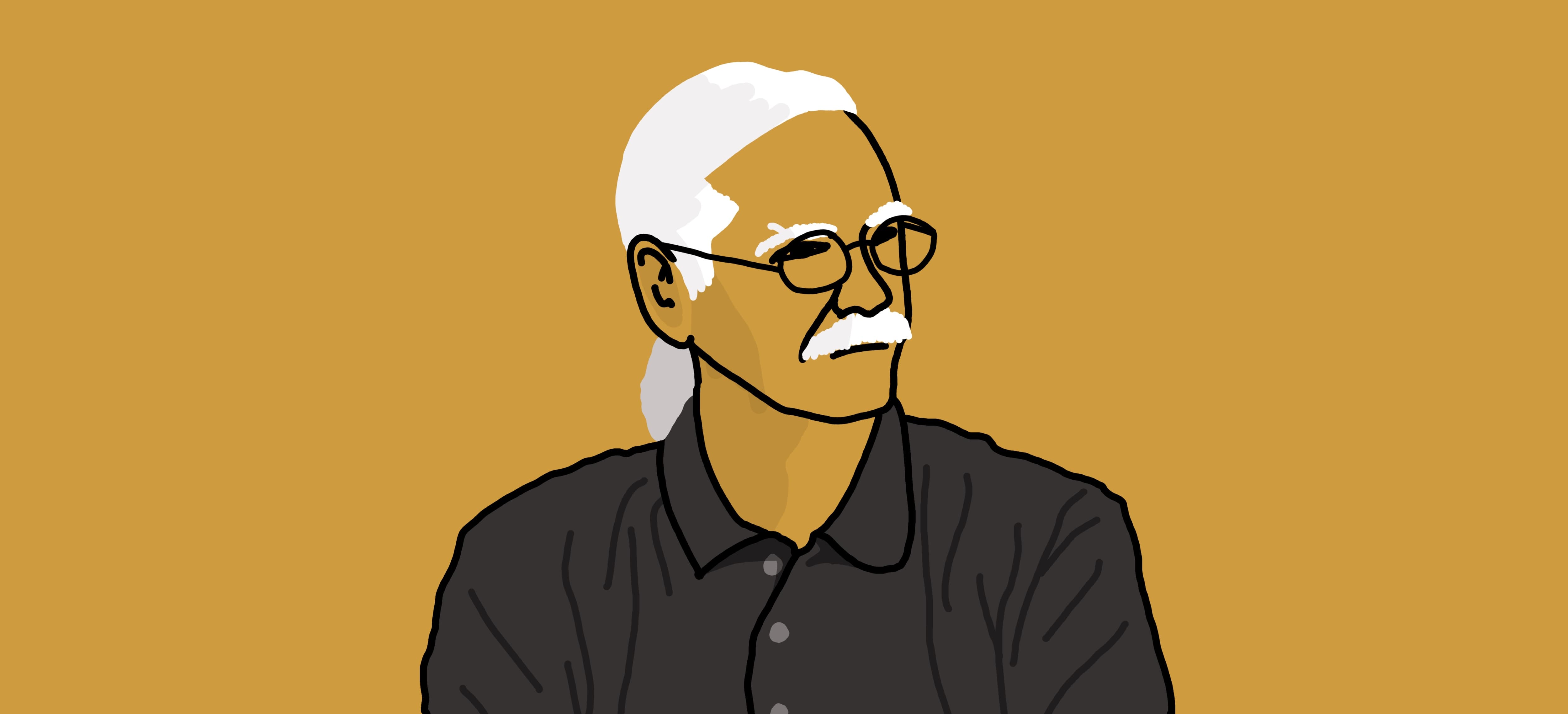
Untethered Soul by Michael Singer—Summary, Notes, + Quotes
A spiritual exploration into who we are and who we ought to be.
-
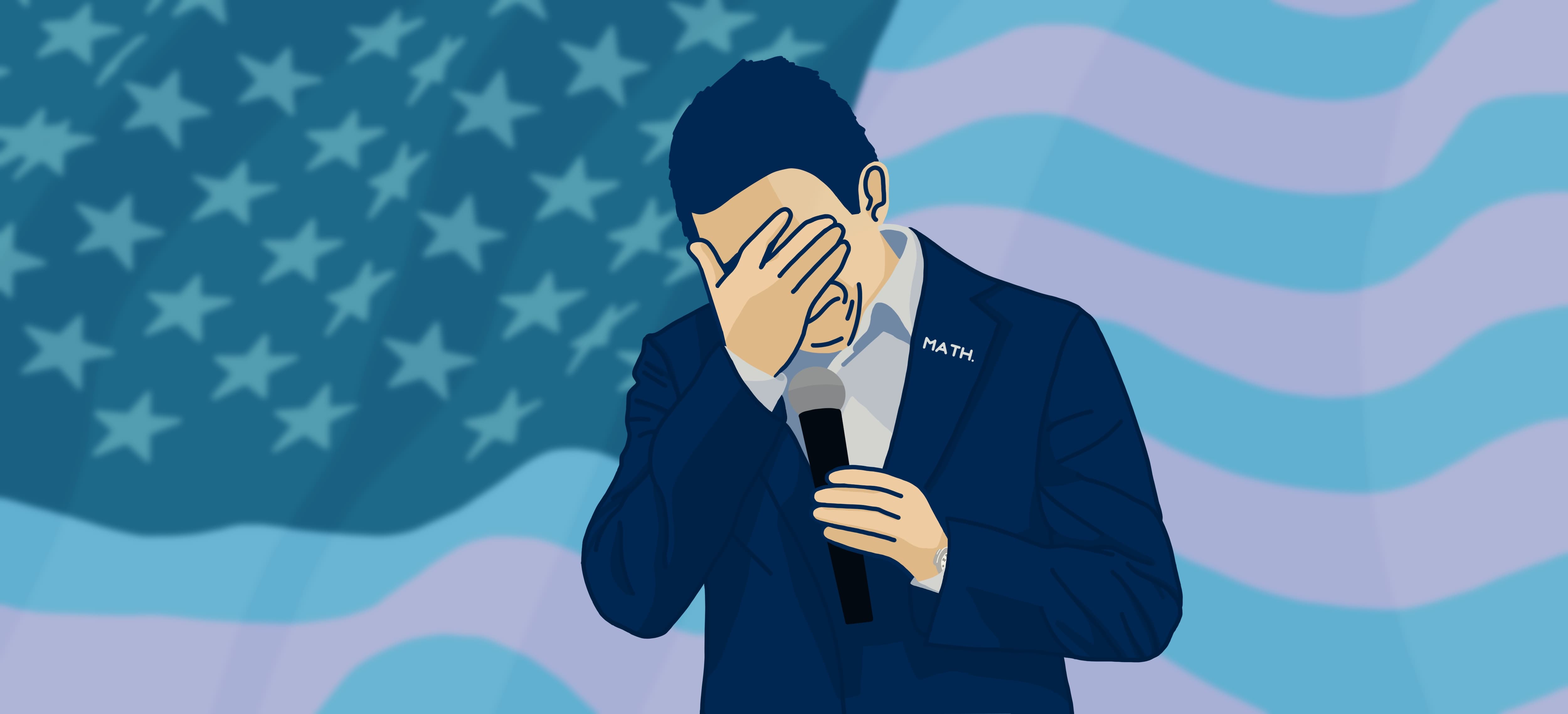
War on Normal People—Summary, Notes, + Quotes
Is universal basic income the answer?
-
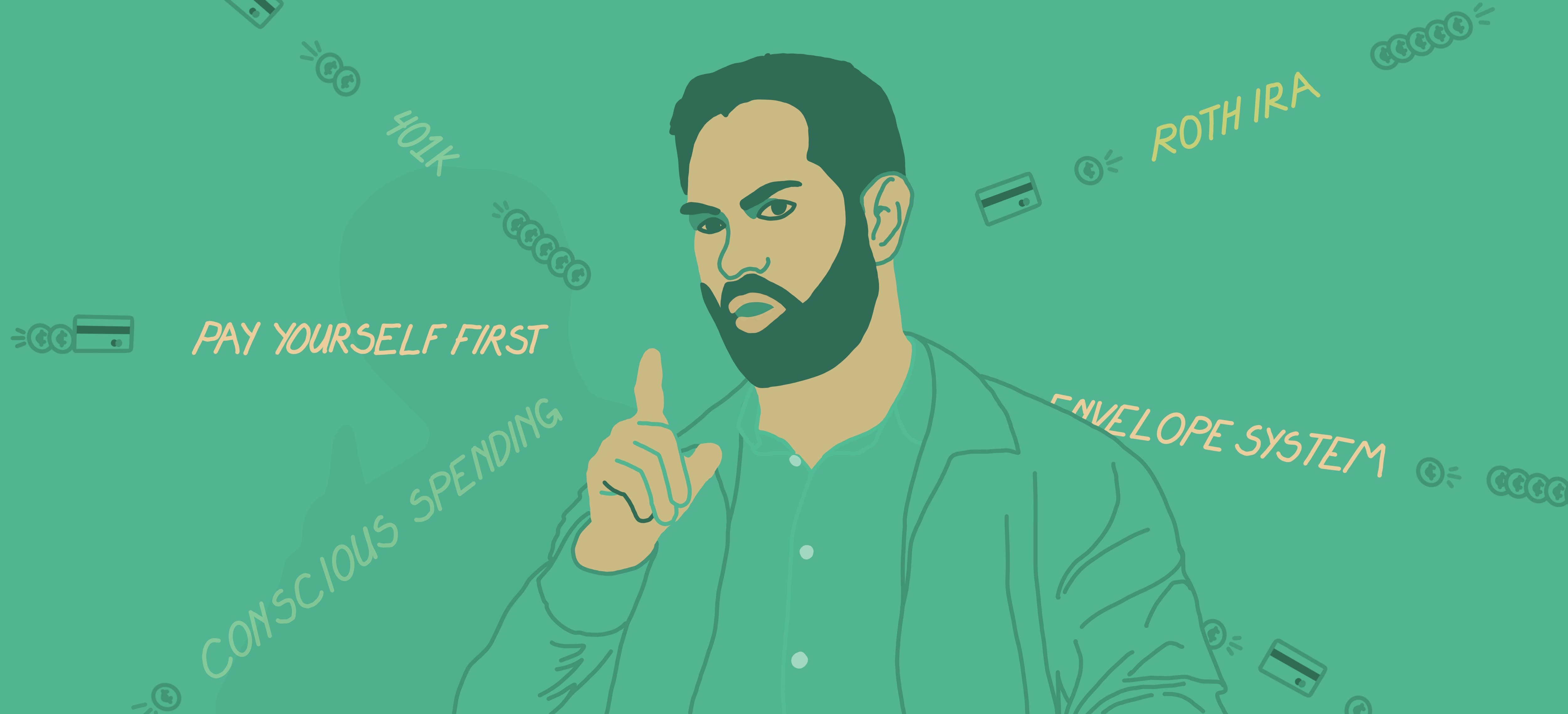
I Will Teach You to Be Rich—Summary, Notes, + Quotes
The best introduction to personal finance and how to enjoy spending your money.
-

The Effective Executive—Summary, Notes, + Quotes
The essential handbook to learn leadership and effectiveness at work.
Never Miss an Article
Get notified by email when I publish a new article.
